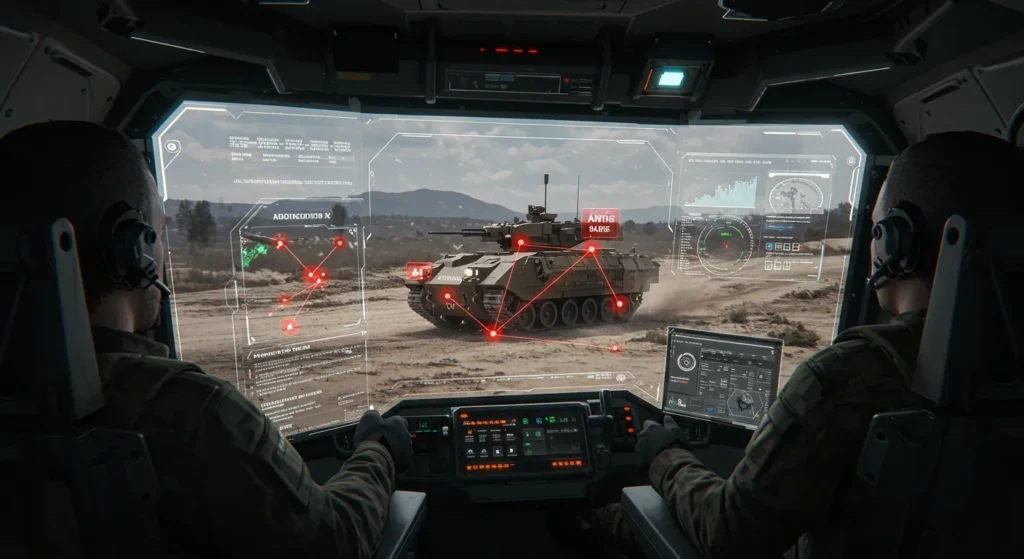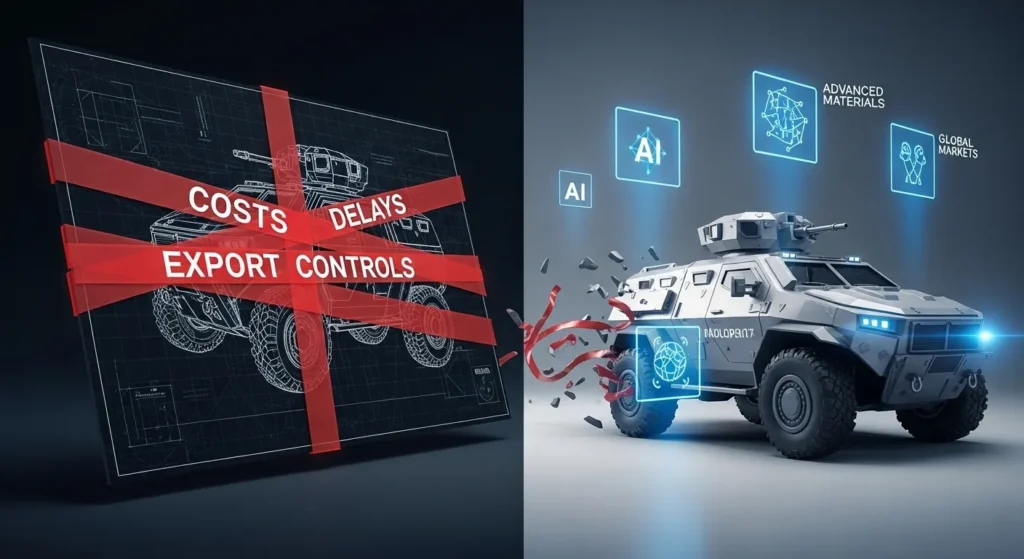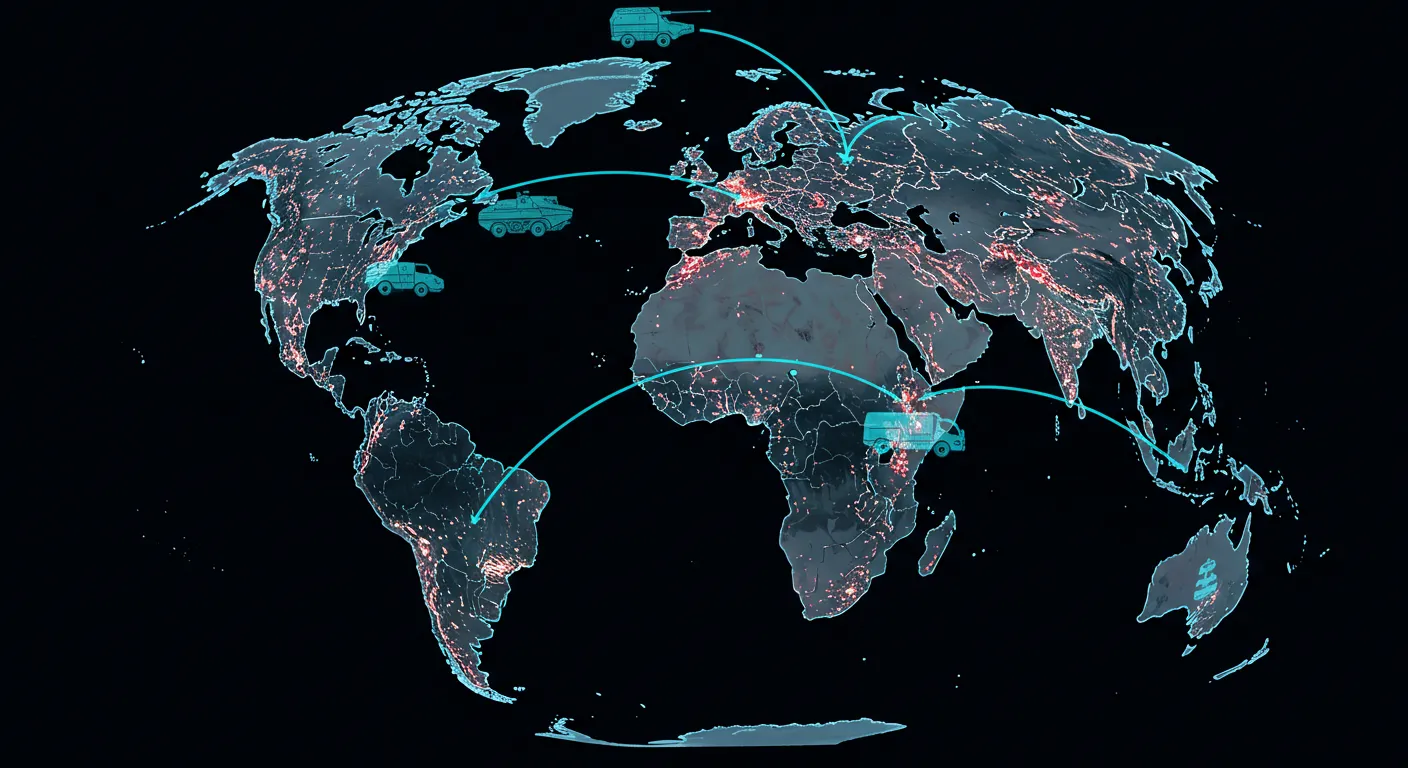The global security landscape is in constant flux, compelling nations and organizations to adapt their defense and security postures. Central to this adaptation is the evolution of armored vehicles. From the front lines of conflict zones to the secure transport of valuable assets, these specialized platforms are undergoing significant transformations. This market research report delves into the critical armored vehicle market trends, examining the drivers, emerging technologies, and regional dynamics shaping the future of protected mobility.
Understanding these trends is paramount for military strategists, security professionals, civilian fleet managers overseeing high-risk operations, and even vehicle enthusiasts keen on the cutting edge of automotive and defense technology. The demand for enhanced protection, superior mobility, and integrated intelligence is pushing innovation at an unprecedented pace, leading to a dynamic and rapidly evolving market.
Current State of the Armored Vehicle Market: An Overview
The global armored vehicle market is a multi-billion dollar industry experiencing robust growth. This expansion is fueled by a confluence of factors, including escalating geopolitical tensions, modernization programs replacing aging fleets, and the persistent threat of asymmetric warfare. The market can be broadly segmented:
– Military Sector: This remains the largest segment, encompassing Main Battle Tanks (MBTs), Infantry Fighting Vehicles (IFVs), Armored Personnel Carriers (APCs), Mine-Resistant Ambush Protected (MRAP) vehicles, and Light Armored Vehicles (LAVs).
– Law Enforcement Sector: Demand here is driven by the need for crowd control vehicles, tactical response vehicles, and protected transport for officers in high-risk situations.
– Commercial/Civilian Sector: This includes armored SUVs and sedans for VIP protection, cash-in-transit (CIT) vehicles, and specialized vehicles for corporations operating in volatile regions.
While a few major defense contractors traditionally dominate the military segment, the commercial sector sees a wider array of specialized manufacturers and upfitters. The overarching trend across all segments is a push towards more sophisticated, adaptable, and survivable platforms.

Key Drivers Shaping Armored Vehicle Market Trends
Several interconnected factors are fundamentally influencing the design, development, and deployment of armored vehicles worldwide. These drivers are critical in understanding the current and future armored vehicle market trends.
Geopolitical Instability and Rising Defense Budgets
Heightened geopolitical tensions, territorial disputes, and ongoing conflicts in various regions are primary drivers for increased defense spending. Nations are reassessing their military capabilities, leading to significant investments in modernizing and expanding their armored vehicle fleets. This is particularly evident in Eastern Europe, the Asia-Pacific region, and parts of the Middle East. The perceived need for robust land power acts as a direct catalyst for armored vehicle procurement and development programs.
Evolving Asymmetric Warfare and Urban Conflict
The nature of modern conflict has shifted. Asymmetric warfare, characterized by engagements with non-state actors, often in complex urban environments, places unique demands on armored vehicles. The prevalence of Improvised Explosive Devices (IEDs), rocket-propelled grenades (RPGs), and ambushes necessitates vehicles with:
– Superior blast protection: MRAP vehicles gained prominence due to this need.
– Enhanced situational awareness: 360-degree camera systems, acoustic sensors.
– Maneuverability in confined spaces: Favoring lighter, more agile platforms over traditionally heavy tanks in certain scenarios.
Growing Demand for Commercial and Civilian Armored Vehicles
Beyond military applications, the demand for armored vehicles in the commercial and civilian sectors is steadily increasing. This includes:
– VIP and Executive Protection: High-net-worth individuals, diplomats, and corporate executives in regions with security risks often rely on discreetly armored sedans and SUVs.
– Cash-in-Transit (CIT) Vehicles: The secure transport of currency and valuables remains a critical application, with vehicles requiring sophisticated protection against robbery and attack.
– Humanitarian and NGO Operations: Organizations operating in conflict zones or unstable areas utilize armored vehicles for personnel safety.
This growth highlights a broader societal concern for security and the increasing accessibility of armoring solutions for non-military applications.
Technological Advancements in Protection and Performance
Continuous innovation in materials science, sensor technology, and weapon systems directly impacts armored vehicle design. Key advancements include:
– Advanced Armor Materials: Development of lighter yet stronger composite armors, ceramics, and advanced metallic alloys that offer improved ballistic protection without excessive weight penalties.
– Active Protection Systems (APS): Systems designed to detect and intercept incoming threats like RPGs and anti-tank guided missiles (ATGMs) before they strike the vehicle.
– Improved Powertrains and Suspension: Enhancements for better off-road mobility, speed, and reliability, even with increased armor loads.

Emerging Armored Vehicle Market Trends to Watch
The intersection of established drivers and new technological possibilities is giving rise to several exciting and transformative trends within the armored vehicle market.
1. Integration of Artificial Intelligence (AI) and Autonomous Capabilities
AI is poised to revolutionize armored vehicle operations. Current and emerging applications include:
– Threat Detection and Prioritization: AI algorithms can analyze sensor data (optical, thermal, acoustic) far quicker and more accurately than human operators to identify potential threats.
– Autonomous Navigation (Driver Assist): While fully autonomous combat vehicles are still some way off, advanced driver-assistance systems (ADAS) and semi-autonomous navigation for convoy operations or hazardous environment reconnaissance are becoming feasible.
– Predictive Maintenance: AI can analyze vehicle performance data to predict component failures, improving readiness and reducing downtime.
– Enhanced C4ISR: AI-powered systems can fuse data from multiple sources, providing commanders and crew with a clearer, more actionable understanding of the battlefield (Command, Control, Communications, Computers, Intelligence, Surveillance, and Reconnaissance).
– Cybersecurity: As vehicles become more networked, robust cybersecurity measures, often AI-driven, are essential to protect against electronic warfare and cyber-attacks.
2. Shift Towards Lighter, More Agile, and Multi-Role Platforms
While heavy armor remains crucial for certain roles, there’s a discernible trend towards lighter, more agile platforms. This is driven by:
– Rapid Deployability: Lighter vehicles are easier to transport by air or sea, enabling quicker response to crises.
– Urban Operations: Smaller, more maneuverable vehicles are better suited to navigating narrow streets and dense urban terrain.
– Reduced Logistical Footprint: Lighter vehicles typically consume less fuel and require less maintenance support.
The emphasis is on achieving an optimal balance between protection, payload, and mobility. This often involves the use of advanced lightweight armor composites and innovative structural designs. Furthermore, modular design principles are gaining traction, allowing a common chassis to be adapted for various roles (e.g., APC, reconnaissance, command post, ambulance), simplifying logistics and reducing lifecycle costs.
3. Focus on Sustainability and Alternative Powertrains
Environmental concerns and operational advantages are driving interest in hybrid-electric and potentially fully electric powertrains for armored vehicles. Benefits include:
– Reduced Thermal and Acoustic Signature: Electric propulsion enables “silent watch” capabilities and makes vehicles harder to detect.
– Improved Fuel Efficiency: Hybrid systems can significantly reduce fuel consumption, a critical logistical consideration in extended deployments.
– Onboard Power Generation: Increased electrical power capacity for advanced sensors, communication systems, and even directed energy weapons.
While challenges related to battery energy density, charging infrastructure in austere environments, and survivability of electrical components persist, the long-term armored vehicle market trends point towards greater adoption of these technologies.
4. Enhanced Crew Survivability and Human Factors Engineering
Beyond ballistic protection, there’s a growing focus on holistic crew survivability and operational effectiveness:
– Blast-Mitigating Seats: Specially designed seats that absorb and deflect energy from underbelly explosions.
– Improved Situational Awareness Systems: Integrated sensor suites, helmet-mounted displays, and transparent armor providing wider fields of view.
– Ergonomics and Climate Control: Designing crew compartments for reduced fatigue and improved comfort during long missions.
– Fire Suppression Systems: Advanced, rapid-response systems to protect crew and critical components.
Human factors engineering is playing a more significant role to ensure that crews can operate complex systems effectively under stress.

Regional Armored Vehicle Market Trends and Outlook
The demand and specific requirements for armored vehicles vary significantly by region:
– North America: Focus on modernization of existing fleets, integration of advanced technologies (AI, APS), and development of next-generation combat vehicles. Strong domestic R&D and manufacturing base.
– Europe: Increased defense spending by NATO members in response to regional security concerns. Emphasis on interoperability, collaborative development programs, and replacing Cold War-era equipment. Growing interest in hybrid-electric solutions.
– Asia-Pacific: Rapid military modernization in several countries, including China and India. Demand for a wide range of armored vehicles, from MBTs to light protected vehicles. Indigenous development programs are increasingly prominent.
– Middle East & Africa: Ongoing conflicts and security challenges continue to drive demand, particularly for MRAPs, LAVs, and patrol vehicles. Refurbishment of existing fleets and procurement of new platforms are common.
– Latin America: Primarily focused on internal security, border patrol, and combating organized crime. Demand for light armored vehicles, tactical trucks, and personnel carriers.

Challenges and Opportunities in the Armored Vehicle Market
The armored vehicle market, while promising, faces several challenges:
– High Development and Procurement Costs: Advanced armored vehicles are expensive, putting strain on defense budgets.
– Long Development Cycles: Bringing a new platform from concept to deployment can take many years.
– Technological Obsolescence: Rapid advancements can make systems obsolete relatively quickly.
– Export Controls and Geopolitical Restrictions: International sales can be complex and politically sensitive.
– Ethical Considerations: Particularly concerning autonomous weapons systems and AI decision-making.
Despite these challenges, significant opportunities exist:
– Innovation in Materials and Protection: Continued breakthroughs in armor technology and APS.
– Digitalization and Networking: Integration of advanced C4ISR, AI, and cyber capabilities.
– Demand from Emerging Markets: Growing economies seeking to modernize their security forces.
– Upgrading Aging Fleets: Many countries still operate vehicles nearing the end of their service life, creating a consistent demand for replacements.
– Niche Vehicle Development: Opportunities for specialized vehicles catering to specific threats or operational environments.
Conclusion: Navigating a Dynamic Future
The armored vehicle market trends clearly indicate a sector undergoing profound transformation. Driven by evolving threats, technological breakthroughs, and shifting geopolitical realities, the armored vehicles of tomorrow will be smarter, more adaptable, better protected, and increasingly networked. From the integration of artificial intelligence and hybrid powertrains to the emphasis on modularity and crew survivability, innovation is key.
For military planners, security agencies, and commercial operators, staying abreast of these trends is not just advantageous—it’s essential for maintaining operational effectiveness and ensuring personnel safety. The future of armored vehicles will be defined by a relentless pursuit of superiority in protection, mobility, and intelligence, ensuring these critical assets remain relevant and decisive in an increasingly complex world.














